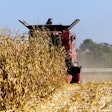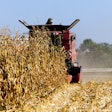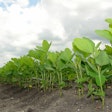
The latest U.S. Drought Monitor report reveals a complex pattern of drought conditions across the nation, with significant implications for agricultural production. The report, jointly produced by the National Drought Mitigation Center at the University of Nebraska-Lincoln, the United States Department of Agriculture, and the National Oceanic and Atmospheric Administration, highlights both improvements and deteriorations in various regions.
In the Southeast, a lack of precipitation combined with above-normal temperatures has led to widespread expansion of abnormally dry and moderate drought conditions across Alabama, Georgia, and Florida. This trend is particularly concerning for the region's agricultural sector, as soil moisture levels and streamflows are showing rapid declines over the past one to three months.
The Midwest, a crucial area for U.S. crop production, has seen an expansion of abnormally dry conditions from central Missouri to west-central Ohio. This development could potentially impact the upcoming planting season if conditions do not improve.
In contrast, the Ohio River Valley and Mid-Atlantic regions received beneficial rainfall, leading to improvements in eastern Oklahoma, northeast Mississippi, northern Alabama, and parts of Virginia and West Virginia. This precipitation is likely to provide some relief for farmers in these areas as they prepare for spring planting.
The Western United States continues to face challenges, with deteriorating conditions across Nevada and the Four Corners region. Low snowpack in higher elevations is particularly worrisome for irrigation prospects in the coming months. However, central Idaho and Montana saw improvements due to recent snowfall, which could benefit local agriculture.
California, a major agricultural producer, remained unchanged in drought status this week. However, the state's farmers continue to grapple with long-term water management issues.
In the High Plains, western Nebraska and Kansas experienced degradation due to ongoing lack of precipitation, potentially affecting winter wheat crops and upcoming corn and soybean plantings.
As the agricultural sector enters a critical period for many crops, these drought conditions pose significant challenges. Farmers across affected regions may face difficult decisions regarding crop selection, irrigation strategies, and resource allocation in the coming months.
















